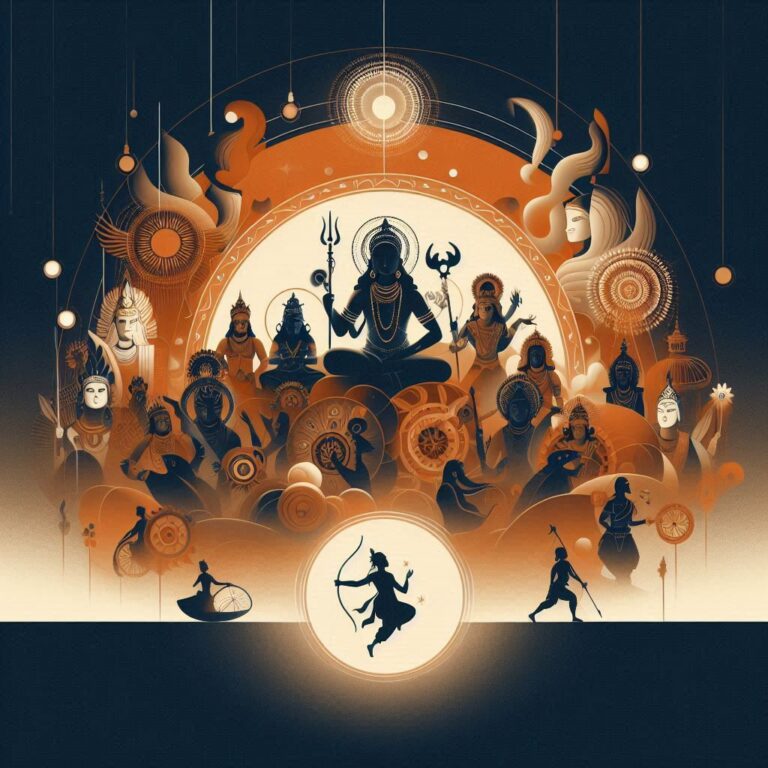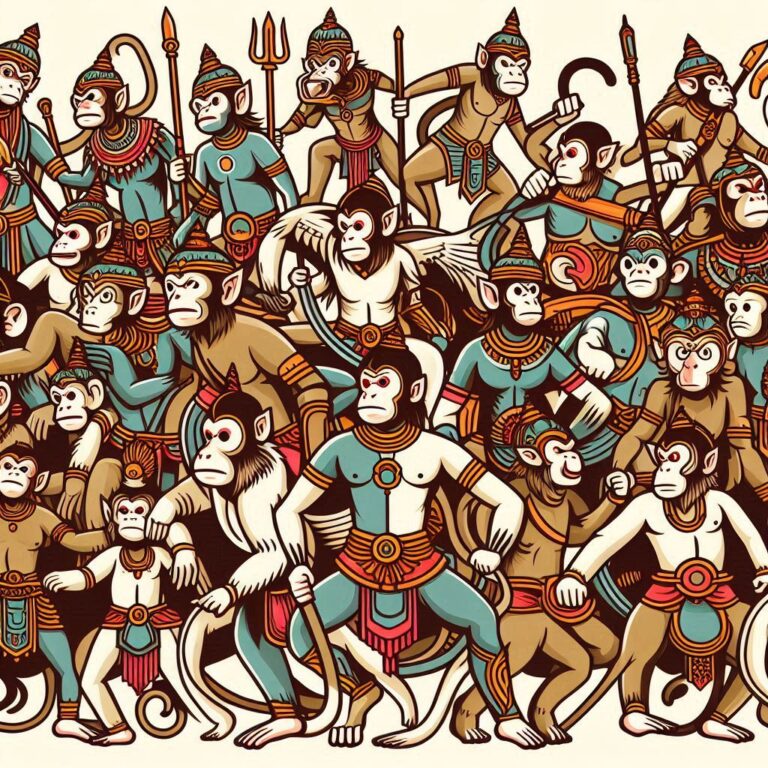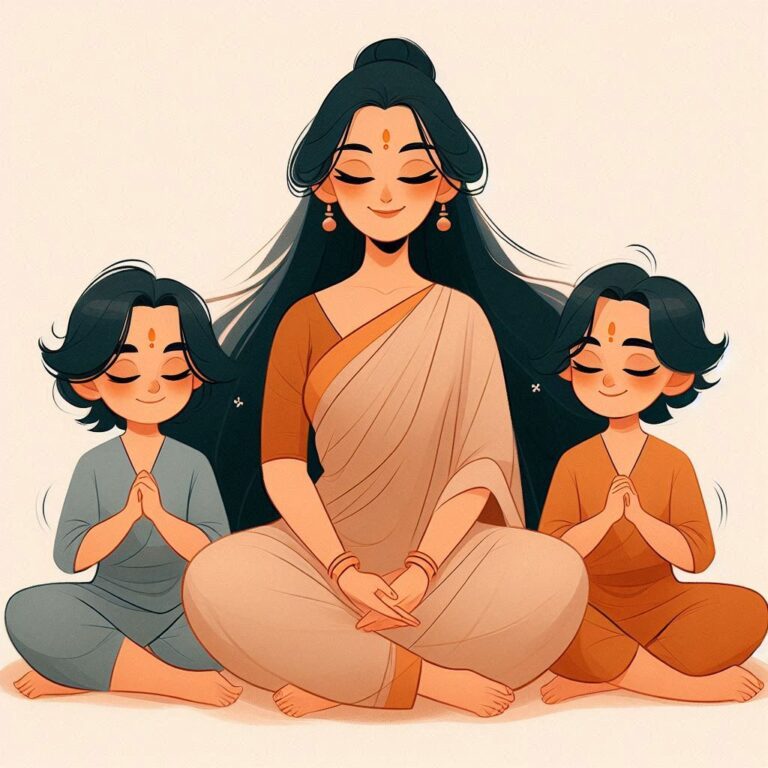Divine Intervention in Ramayan: A Profound Analysis Unveiled
Divine Intervention in the Ramayan: A Profound Exploration
The Ramayana, widely regarded as one of the two great epics of ancient Indian literature, is packed with fascinating characters, moral dilemmas, and cosmic battles. Yet, underneath these storytelling layers lies a deeper thread: divine intervention. Have you ever paused to consider how these divine interventions shape the narrative? Are they mere plot devices, or do they serve a higher purpose in the tapestry of the Ramayana?
In this article, we’ll dive into the various facets of divine intervention in the Ramayana, exploring the significance of divine beings, the impact of their actions, and the overarching lessons we can draw from them. We’ll also sprinkle in some beautiful dohas and shlokas to enrich our understanding—because let’s face it, nothing says “profound wisdom” quite like ancient poetry!
Understanding Divine Intervention
Before we venture further, let’s take a moment to clarify what we mean by divine intervention. In essence, it refers to the involvement of deities in the mortal world, influencing events to align with cosmic or moral order. The Ramayana is riddled with such interventions, showcasing how the gods and goddesses play pivotal roles in the lives of both mortals and the celestial realm.
Imagine life as a vast ocean. Sometimes, it feels smooth and seamless, while at other moments, storms brew unexpectedly, rocking our boats. In this scenario, the divine acts as a lighthouse, guiding lost sailors back to safe shores. This is a metaphor for how divine intervention works in the Ramayana.
The Role of Ram in Divine Intervention
One of the central figures in the Ramayana is Rama, the seventh avatar of Vishnu. His birth itself is a result of divine intervention, given that sage Vishwamitra requests the gods’ help to protect the yagna (sacrificial fire). But more than just being a divine incarnation, Rama exemplifies the ultimate dharma (righteousness) in human form.
He Is The Ideal Man
Rama’s journey illustrates how divine intervention often guides him through testing times. For example, think of the moment when Rama is exiled to the forest. It could easily have been deemed a tragic twist of fate. However, it’s here that the divine hand is evident. This exile isn’t just punishment; it’s an opportunity for Rama to showcase virtues like patience, righteousness, and humility in the face of adversity.
Here’s a lovely shloka to reflect on these qualities:
धर्मात्मा राघवः कश्चित् न तत्त्वं मम रोचते।
भूतेषु जनितं तश्य लोकं सर्वत्र मनोऽनुगृह्यते॥
Dharmatma Raghavah Kashchit Na Tattvam Mama Rochate
Bhuteshu Janitam Tashya Lokam Sarvatra Mano’nugrihyate.
Translation:
“The virtuous Raghava (Rama) is the one who does not seek personal glory; rather, the essence of his character benefits all living beings.”
Intervention of Other Deities
The Ramayana showcases divine intervention not just from Rama but also from various gods and celestial beings. Take the character of Hanuman, for instance. He is an embodiment of devotion and strength, a heavenly being sanctioned to assist Rama in his quest to rescue Sita.
Hanuman’s Leap of Faith
Consider how Hanuman leaps across the ocean to reach Lanka. This act, steeped in faith and divine energy, is more than a physical feat. It’s a potent metaphor for bridging seemingly insurmountable gaps in life. When we are faced with challenges, aren’t we often called to leap—whether that’s to pursue a dream, mend a broken relationship, or tackle our fears?
As Hanuman demonstrates, divine strength supports those who seek to fulfill their dharma. Here’s another enriching doha that beautifully encapsulates this theme:
राम का नाम बृहत, बडा अपार।
जापत जीवन की गति, देते सुख समार॥
Ram Ka Naam Brihat, Bada Apar.
Japat Jeevan Ki Gati, Dete SuKh Samar.
Translation:
“The name of Rama is vast and immeasurable; meditating on it brings happiness to life.”
The Cosmic Battle: Rama vs. Ravana
When we think about divine intervention, we often spotlight the most significant battles in the Ramayana. The ultimate showdown between Rama and Ravana isn’t merely a clash of two titans; it’s a representation of good versus evil, dharma versus adharma.
Divine Support in Every Battle
Throughout this epic battle, divine forces are at play, ensuring that Rama fulfills his destiny. Vibhishana, Ravana’s brother, turns away from his immoral sibling and seeks Rama’s asylum. His choice also reflects divine intervention—showing that even those in adversarial roles can find redemption when they align with righteousness.
Let’s reflect on this profound observation through another shloka:
सा विद्या या विमुक्तये।
वशं राधिकां मैया प्रभु च।
Sa Vidya Ya Vimutkaye.
Vasham Radhikama Maiya Prabhu Cha.
Translation:
“The true knowledge is what liberates the soul, guiding it towards the divine.”
Lessons from Divine Intervention
So, what can we take away from the divine interventions in the Ramayana?
1. Trust in the Divine
Just as Rama trusted in divine guidance during his darkest moments, we too must learn to trust the process. Life isn’t always straightforward, and hurdles are part of the journey. It’s okay to acknowledge that there are unseen hands at play.
2. The Power of Devotion
Hanuman’s unwavering devotion teaches us about the potency of faith. Sometimes, it’s our connection to something greater than ourselves that provides the strength to overcome challenges.
3. Moral Choices Matter
Divine intervention often happens in response to moral choices made by individuals. Vibhishana’s decision to switch allegiances marked a turning point, demonstrating how our choices can resonate through the universe.
4. Embrace Adversity as Growth
Rama’s exile can be seen as a cosmic test. Embrace challenges as opportunities for growth, and view them through the lens of a larger purpose.
Imagining ourselves in the context of the Ramayana provides a unique perspective on our struggles and aspirations.
Conclusion
The divine interventions in the Ramayana serve as compelling reminders of the celestial forces guiding our lives. From the birth and journey of Rama to the unwavering devotion of Hanuman, each character’s role is steeped in divine significance.
As we reflect on these lessons, let’s remember that our lives, much like the epic itself, are imbued with moments of divine grace, waiting for us to recognize and harness them. So next time you face obstacles, ask yourself: What divine intervention might be happening in my life right now?
FAQs
1. What is the significance of divine intervention in the Ramayana?
Divine intervention showcases the interplay between human actions and cosmic forces, emphasizing the importance of dharma (righteous duty).
2. How does Hanuman exemplify divine intervention?
Hanuman’s feats, such as crossing the ocean, symbolize faith and show how devotion can invoke divine support.
3. Why is Rama’s exile considered a divine intervention?
Rama’s exile, though seemingly tragic, is a culmination of divine plans to teach lessons of virtue, resilience, and righteousness.
4. What can we learn from Vibhishana’s character?
Vibhishana’s choice to support Rama over Ravana underscores the concept of redemption and the importance of moral choice.
5. Can we experience divine intervention in contemporary life?
Absolutely! Divine intervention can manifest in our lives through intuition, guidance during challenges, and unexpected support from others.
Feel free to explore the Ramayana further—it’s a wellspring of wisdom waiting to be tapped into!








